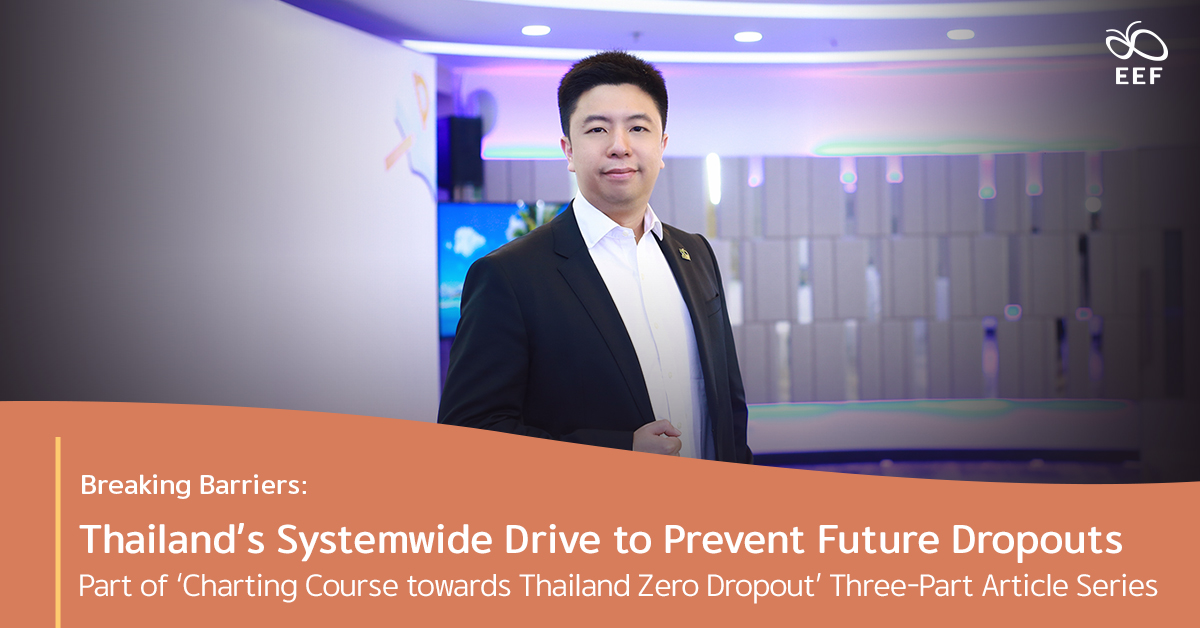
Thailand’s integration of national data systems revealed over a million children who had previously been overlooked by the educational system, shining a light on the vast scale of educational exclusion. This discovery has brought to the forefront the urgent challenges of reintegrating these children and ensuring they stay in school. In the second of this three-part article series, Dr. Kraiyos Patrawart, the Managing Director of the Equitable Education Fund (EEF) Thailand, discusses the strategies being implemented to reintegrate out-of-school children and prevent future exclusions, aiming to create a more inclusive, adaptable, and sustainable educational system.
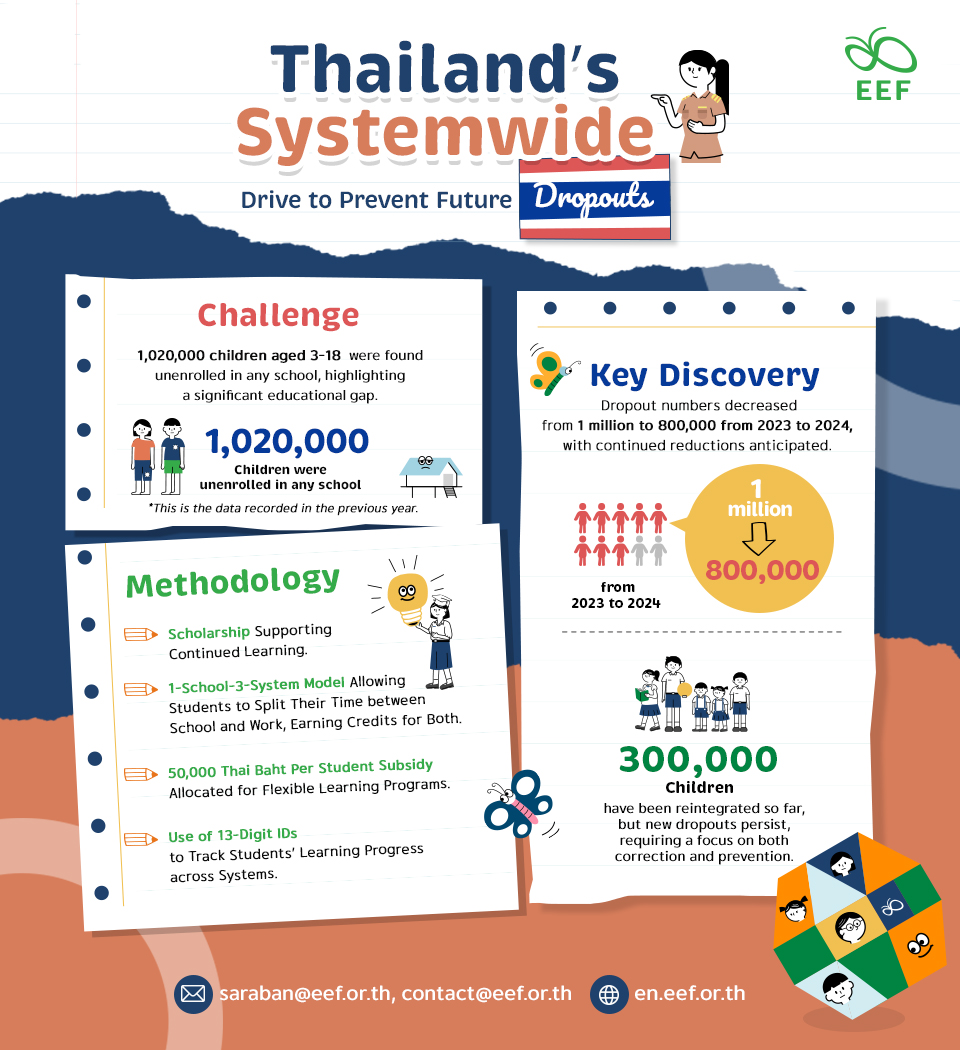
Thailand’s Systemwide Drive to Prevent Future Dropouts
Challenge
1,020,000 children aged 3-18 were found unenrolled in any school,
highlighting a significant educational gap.
Methodology
- Scholarship Supporting Continued Learning.
- 1-School-3-Models Model Allowing Students to Split Their Time between School and Work, Earning Credits for Both.
- 50,000 Thai Baht Per Student Subsidy Allocated for Flexible Learning Programs.
- Use of 13-Digit IDs to Track Students’ Learning Progress across Systems.
Key Discovery
Dropout numbers decreased from 1 million to 800,000 in 2023,
with continued reductions anticipated.
300,000 children have been reintegrated so far, but new dropouts persist,
requiring a focus on both correction and prevention.
Identifying the educational gaps that prevent children from staying in school is only the beginning; the real challenge lies in reintegrating them back into the educational system and developing strategies to keep them engaged. As education continues to evolve, the traditional one-size-fits-all model no longer meets the needs of every learner. Modern reforms are increasingly acknowledging that success is not limited to a conventional college track. By expanding learning pathways, we empower students to pursue education in ways that extend beyond the classroom and adapt to their unique life journeys. In the end, it is not about how someone finishes school; it is about how they continue to grow through lifelong learning
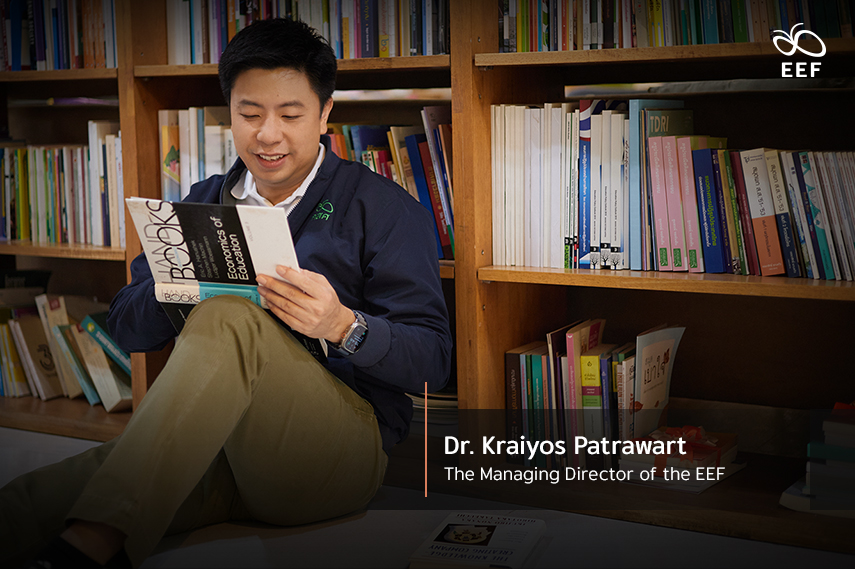
Dr. Kraiyos Patrawart, the Managing Director of the EEF, shared, “No longer is education a one-size-fits-all path; we want students to continue learning beyond compulsory school age, in ways that suit them best. For some, that means returning to school with scholarships, but for others, we must provide alternative pathways—such as short-term courses or entrepreneurship opportunities—so they don’t feel limited by the traditional seven-year college track. The educational landscape is changing, and we need to ensure that every learner has access to flexible options. The goal is clear: they may drop out of school, but they should never drop out of learning.”
This shift towards flexibility demands more than mere policy adjustments, especially in countries like Thailand, where the academic track has long been rigid. New models are emerging to better align education with a changing workforce, with “1-school-3-models” at the forefront. This model integrates formal education with workforce readiness and lifelong learning, aiming to empower students not just to learn but to adapt to real-world demands.
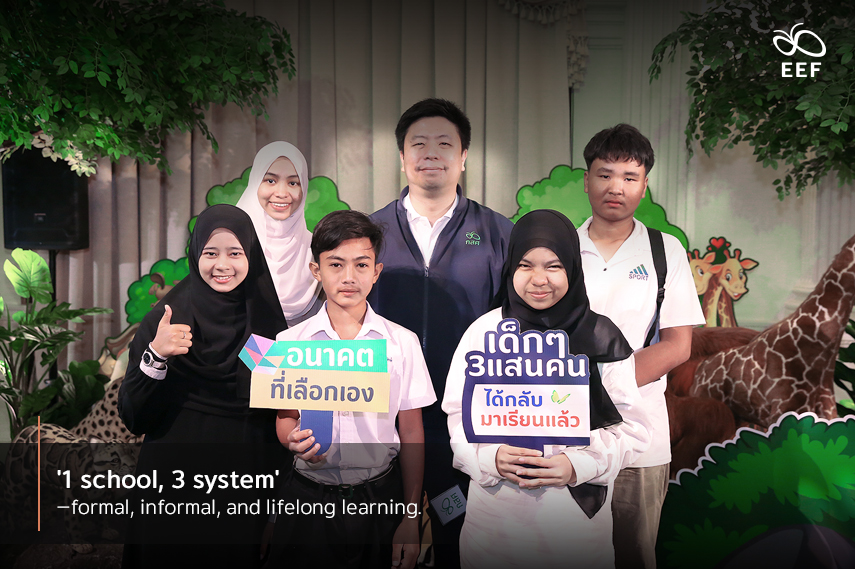
Dr. Kraiyos Patrawart further elaborated on the challenges of overhauling Thailand’s traditional educational system, noting, “You cannot change an educational system that has been in place for so long overnight, especially one like Thailand’s, where everybody is expected to follow the same route and hit the same goals. What we’re trying to do is engage the private sector because they want employees with the right competencies, skills, and knowledge to work right away. We aim to bring the school system and workforce system together through what we call the ‘1 school, 3 models’—formal, informal, and lifelong learning.”
The Managing Director also mentioned the government subsidy and efforts to track student progress across these systems, aiming to bring one million out-of-school children back into the fold. “With a government subsidy of 50,000 Thai Baht per student in the 2025 budget, alongside the use of 13-digit IDs to track learning across these systems, we want to pivot these one million out-of-school children.”
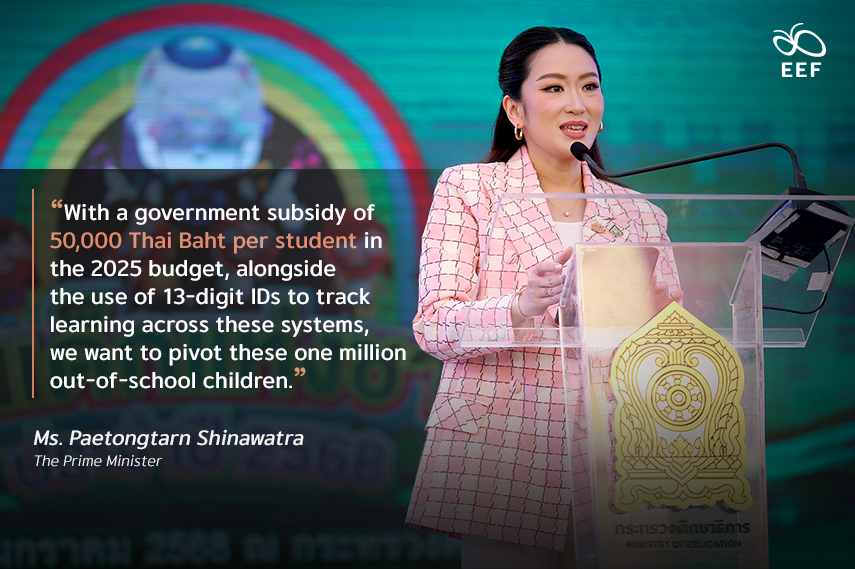
After all, as Dr. Kraiyos Patrawart elaborated, the EEF’s core mission is to remind these young people that they are not a burden on society; on the contrary, they are the change makers who will help transform Thailand’s educational system, making it more flexible, future-oriented, and better aligned with the demands of the job market. “And just like with preschoolers, we’re launching a research project to explore alternative career pathways for youth, including digital roles like YouTubers, all based on evidence,” he added, offering a glimpse into what lies ahead with the EEF-spearheaded Thailand Zero Dropout initiative.
Thailand’s recent efforts signal a quiet but significant shift in how education systems address deep-rooted gaps. By revealing the scale of exclusion and reintegrating learners through student-centered models—like scholarships, flexible scheduling, and integrated data tracking—the country is redefining inclusion. This shift from uniformity to responsiveness lays the foundation for a broader vision: a movement that not only brings children back to school but prepares them for a job-ready future through flexible learning tailored to their needs — a mission embodied by the Equitable Education Fund (EEF) Thailand, which works to reduce educational inequality through research, collaboration, and support for those most in need.
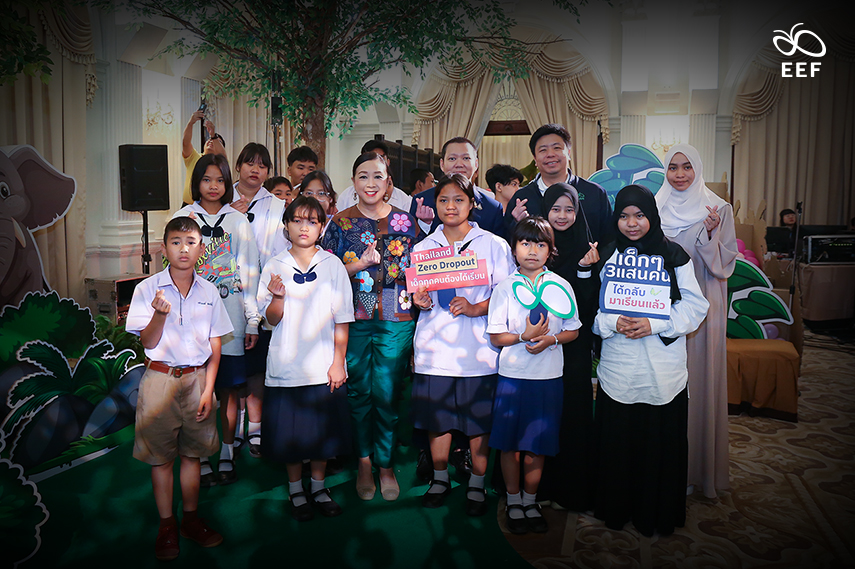
Last year, the number of out-of-school children was reduced to 900,000, and just last month, it dropped further to 800,000. Approximately 300,000 children have been successfully reintegrated, but new dropouts continue to emerge, highlighting the need for both corrective action and preventive measures. Beyond these numbers, Thailand’s evolving approach reflects a deeper rethinking of education’s purpose. As new pathways emerge and success is increasingly redefined, there is growing recognition that learning does not always follow a straight line. Systems built on flexibility and dignity become spaces of possibility—where learners can grow in ways that align with their unique realities and aspirations. The next installment will explore Thailand’s nationwide commitment to flexible, job-ready education and how the country is reshaping its educational system to equip learners with the skills and opportunities needed for the workforce of the future.
All For Education is all about people; only when all is in for education is Education For All. Join the movement to reduce educational inequality. Support the EEF by donating to fund research, partnerships, and assistance for children, youth, and adults in need of educational support. Click the link to contribute today and help create a society where education is open and equal for all. Together, we can make a lasting impact.

